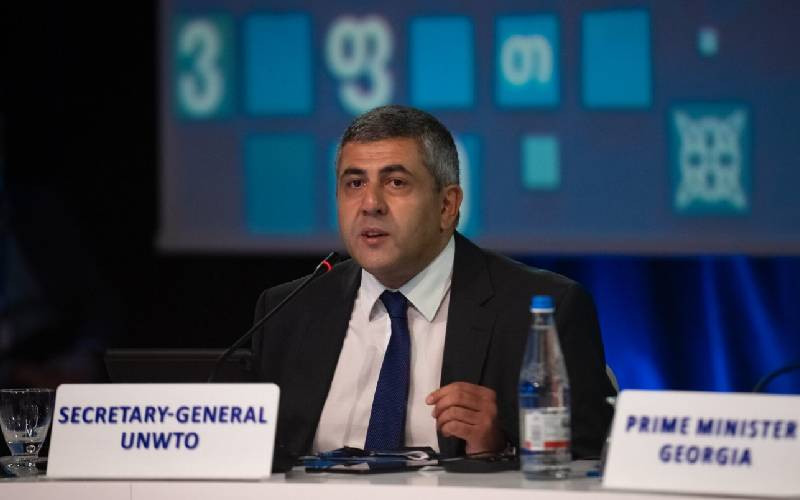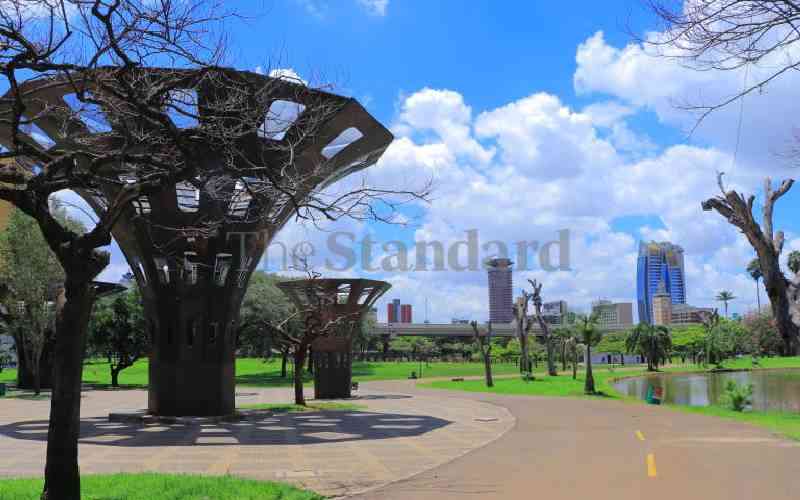 |
|
The view of Mediterranean Sea from the second floor balcony of Helnan Palestine Hotel. |
The Mediterranean Sea swings into view as our bus roars past the end of a tunnel leading into Alexandria city. We are awoken from exhausted slumber.
The journey of three long and boring hours from Egypt’s capital, Cairo, has yielded its end of the bargain; delivering all of us into the city of his majesty Alexander the Great.
And in that intense moment of embracing the blue vast of the sea, we easily let go of the troubles we had experienced in the traffic, meandering past loops and domes, and going over annoying bumps.
“This is it,” Dr Sherrif Shoukry of the Union of African journalists tells the jubilant team of scribes. “That, over there, is the statue of the man who ‘owns’ the city,” he motions towards a well carved monolith of a horse rider with a curly coif who appears frozen in ancient time.
The city of Alexandria was founded on a town called Rhakotis in 331 BC by the Greek Alexander the Great. It became the only permanent Greek colony in Egypt, acting as a hub for the interchange of Greek and Egyptian art and culture.
Like a masterpiece, the city has a magnificent landscape resulting from centuries of great craftsmanship. The highways are lined with tall date palms – the only tree that enjoys the salt and sand of the coast.
The overall effect is an excellent blend of natural beauty and smooth workmanship.
As we head to our first stop, the Qaitbay Citadel, it is hard to avoid the feel good attitude on display from tourists and locals alike. The Cornish El Gaish road stretches for miles hugging the sea past the citadel. The black tarmac shines under an intense sun (which is the folly of nature over the Sahara), the most intense glare of which is yet to come.
Pharaoh’s island
The citadel, situated at the entrance of the eastern harbour on the eastern side of the Pharaoh’s island, is large and intimidating. It has all the makings of war fortification. Interestingly, except for the size, there is not much to tell it apart from Kenya’s Fort Jesus, built by the Portuguese in the 19th century.
This Egyptian fort was erected on the exact site of the famous lighthouse of Alexandria, one of the seven wonders of the ancient world, by Sultan Abdul Nasser Qa’it Bay.
From the citadel, we head for lunch at an Italian restaurant where we are treated to a sea-food buffet, concluded with various Egyptian desserts.
Helnan Palestine (partly inside the sea and partly on land) is the hotel where we will be staying for three days before returning to Cairo. From the balcony of my hotel room, I am able to view the sea and the much famed lighthouse in the middle of Mediterranean. It is easy to understand why it is held in high regard.
A few metres from the hotel is El-Montazah Palace; built with opulent flourish to signify the status of the pharaohs who lived there in ancient times.
Tourism business
Stay informed. Subscribe to our newsletter
El Gaish Road leads from the hotel. It is flanked by beaches on one side and cafes and buildings with distinctive architecture on the other.
Walking past stalls, we come across fishermen working hard to meet the demands of a booming tourism business. Further down the road is the modern library of Alexandria. Though now fully functional in the realm of modern learning, the library commemorates the first ever book haven to have been built in the African continent. Its design, reminiscent of the early morning sun, is magnificent from a distance.
Three days of criss-crossing through Alexandria treat us to an eyeful; the citadel, the bibliotheca Alexandrina, the light house, citadel Qaitbay, El-Montazah Palace, the beaches and the Mediterranean Sea. We glimpse the ancient Roman theatre, Stanley Bridge, Columbus statue and Alexandria Sawary.
In Egypt, our guide tells us, the city of Alexandria is the second largest metropolis. It is also much younger than Cairo. However, in no other way does Alexandria take second place.
And it is for that reason many refer to it as the ‘pearl of the Mediterranean’.
 The Standard Group Plc is a
multi-media organization with investments in media platforms spanning newspaper
print operations, television, radio broadcasting, digital and online services. The
Standard Group is recognized as a leading multi-media house in Kenya with a key
influence in matters of national and international interest.
The Standard Group Plc is a
multi-media organization with investments in media platforms spanning newspaper
print operations, television, radio broadcasting, digital and online services. The
Standard Group is recognized as a leading multi-media house in Kenya with a key
influence in matters of national and international interest.
 The Standard Group Plc is a
multi-media organization with investments in media platforms spanning newspaper
print operations, television, radio broadcasting, digital and online services. The
Standard Group is recognized as a leading multi-media house in Kenya with a key
influence in matters of national and international interest.
The Standard Group Plc is a
multi-media organization with investments in media platforms spanning newspaper
print operations, television, radio broadcasting, digital and online services. The
Standard Group is recognized as a leading multi-media house in Kenya with a key
influence in matters of national and international interest.









